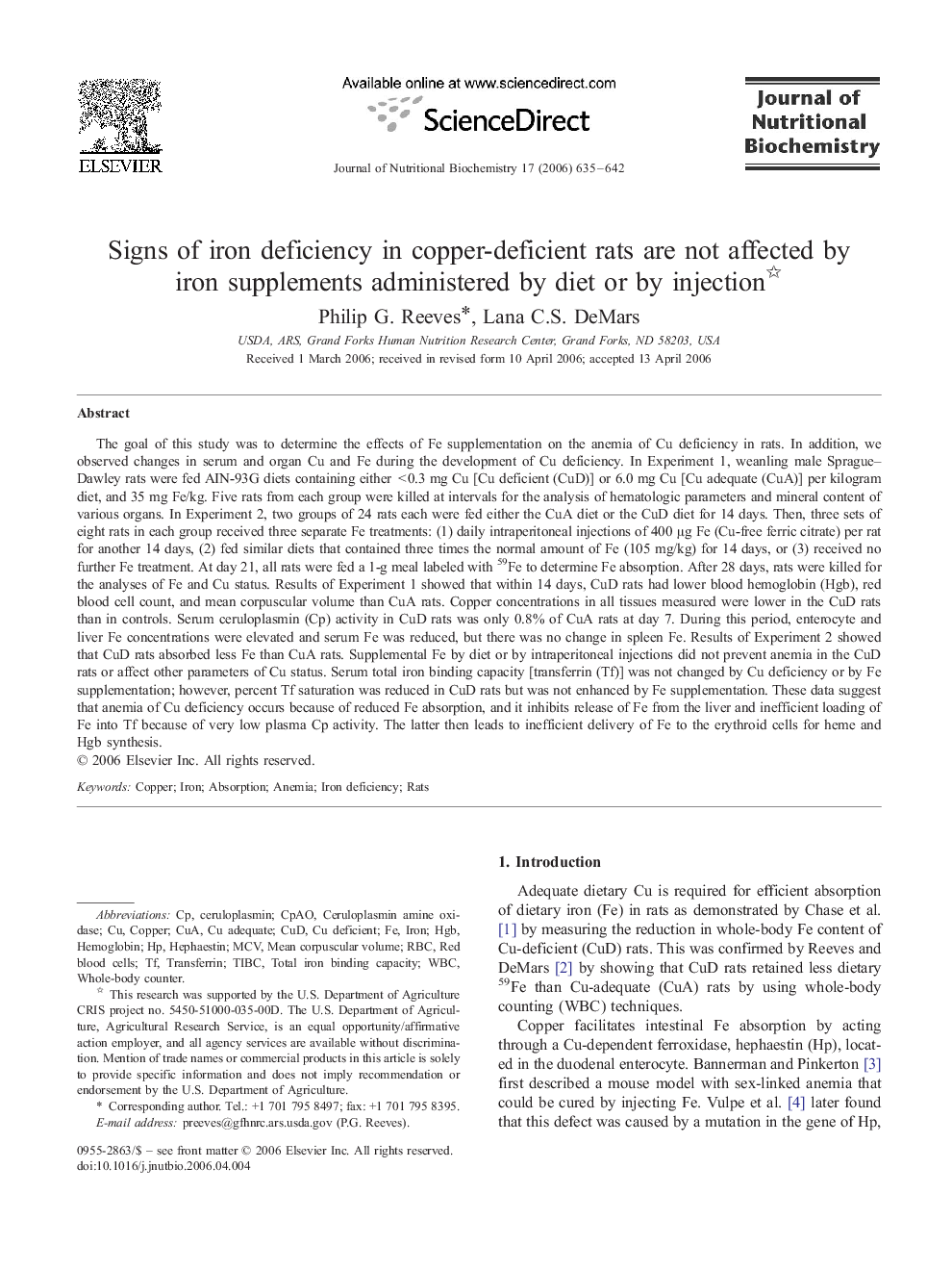| کد مقاله | کد نشریه | سال انتشار | مقاله انگلیسی | نسخه تمام متن |
|---|---|---|---|---|
| 1990957 | 1540753 | 2006 | 8 صفحه PDF | دانلود رایگان |

The goal of this study was to determine the effects of Fe supplementation on the anemia of Cu deficiency in rats. In addition, we observed changes in serum and organ Cu and Fe during the development of Cu deficiency. In Experiment 1, weanling male Sprague–Dawley rats were fed AIN-93G diets containing either <0.3 mg Cu [Cu deficient (CuD)] or 6.0 mg Cu [Cu adequate (CuA)] per kilogram diet, and 35 mg Fe/kg. Five rats from each group were killed at intervals for the analysis of hematologic parameters and mineral content of various organs. In Experiment 2, two groups of 24 rats each were fed either the CuA diet or the CuD diet for 14 days. Then, three sets of eight rats in each group received three separate Fe treatments: (1) daily intraperitoneal injections of 400 μg Fe (Cu-free ferric citrate) per rat for another 14 days, (2) fed similar diets that contained three times the normal amount of Fe (105 mg/kg) for 14 days, or (3) received no further Fe treatment. At day 21, all rats were fed a 1-g meal labeled with 59Fe to determine Fe absorption. After 28 days, rats were killed for the analyses of Fe and Cu status. Results of Experiment 1 showed that within 14 days, CuD rats had lower blood hemoglobin (Hgb), red blood cell count, and mean corpuscular volume than CuA rats. Copper concentrations in all tissues measured were lower in the CuD rats than in controls. Serum ceruloplasmin (Cp) activity in CuD rats was only 0.8% of CuA rats at day 7. During this period, enterocyte and liver Fe concentrations were elevated and serum Fe was reduced, but there was no change in spleen Fe. Results of Experiment 2 showed that CuD rats absorbed less Fe than CuA rats. Supplemental Fe by diet or by intraperitoneal injections did not prevent anemia in the CuD rats or affect other parameters of Cu status. Serum total iron binding capacity [transferrin (Tf)] was not changed by Cu deficiency or by Fe supplementation; however, percent Tf saturation was reduced in CuD rats but was not enhanced by Fe supplementation. These data suggest that anemia of Cu deficiency occurs because of reduced Fe absorption, and it inhibits release of Fe from the liver and inefficient loading of Fe into Tf because of very low plasma Cp activity. The latter then leads to inefficient delivery of Fe to the erythroid cells for heme and Hgb synthesis.
Journal: The Journal of Nutritional Biochemistry - Volume 17, Issue 9, September 2006, Pages 635–642